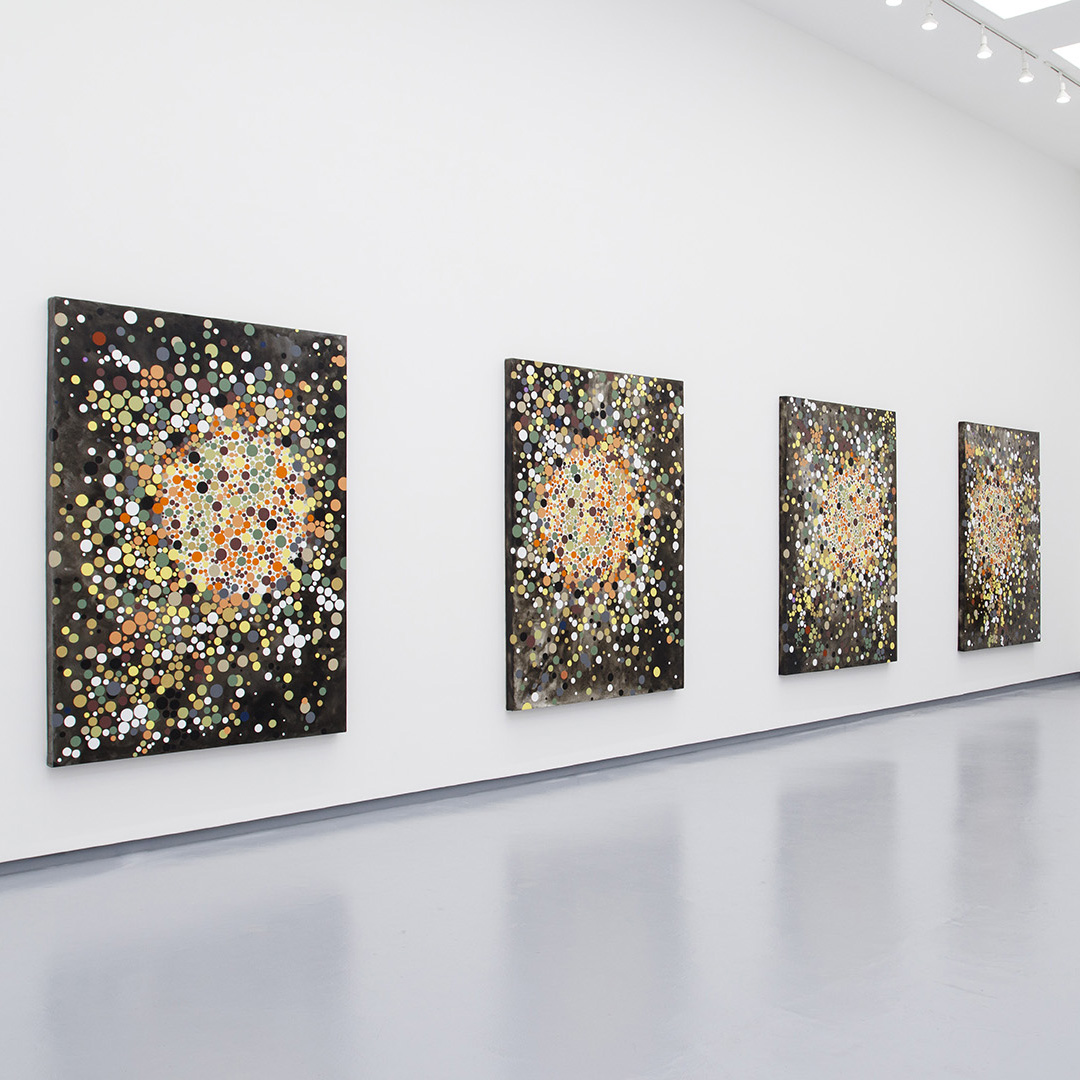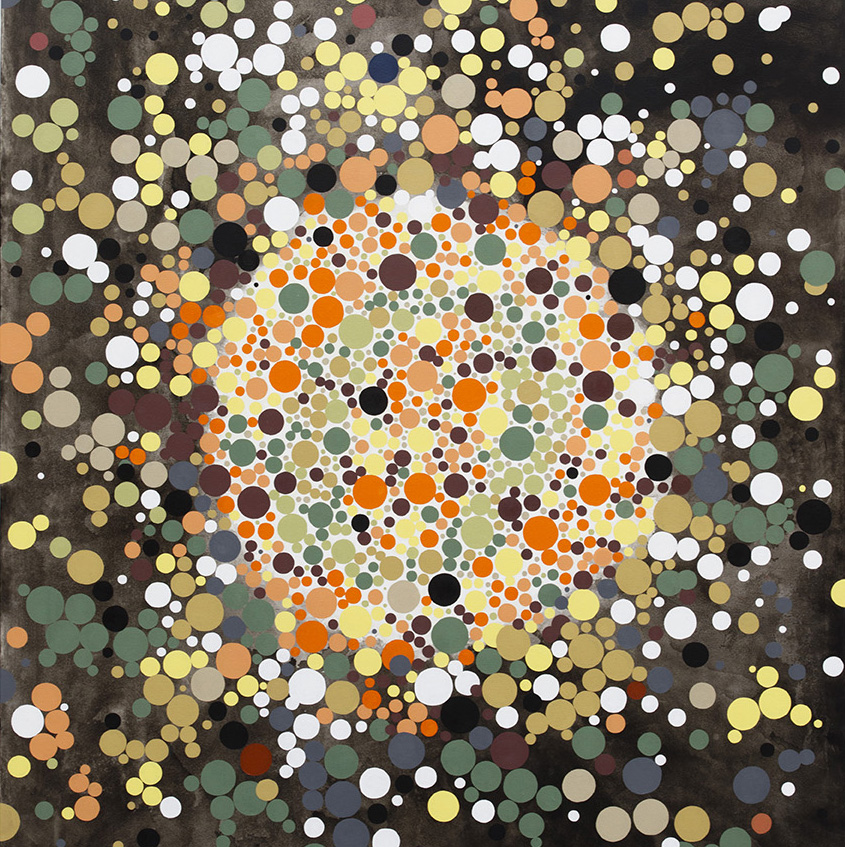Punto Ciego, 2024
In 1917, Professor Shinobu Ishihara of Tokyo University invented a test to detect color blindness. It consists of a set of circular plates covered by colored dots that form visible symbols for people who have full colour vision but are invisible for those who are color blind.
Ishihara also created inverted plates where the symbols are visible for people who are color blind and invisible for those who are not. In other words, the plates hide information in plain sight. Ishihara based his design of the plates on our innate instinct to make sense out of chaos by creating recognizable patterns.
The dots that cover the inverted plates generate visual “confusion” through subtle variations of color. When facing this confusion, the brain simplifies the problem and pulls out patterns that are reassuring. Depending on the color differences that each person is able to perceive, the brain resolves the image by ignoring differences that don’t help make the image it is expecting. To put it differently, due to our inability to perceive the totality of our environment, the brain uses previous experiences to simplify the world, to focus on certain information and ignore the rest. This mechanism applies to all senses, even our sense of reality. The limitations in the vision/perception of an individual could also open perspectives that are not available to others.
As a color-blind person myself, I am taking the principle behind the inverted plates as a point of departure, for Punto ciego I created 10 paintings with a letter “hidden” in each of them. As a whole, the paintings form a sentence that may or may not be seen depending on each person’s color vision.
By pointing out the limitations in visual perception, the works in this exhibition allude to our conceptual limitations and the role played by ideology in the invisibilization of aspects of reality, aspects we may not see even when they are before our eyes. Thus, Punto ciego operates as a metaphor for the invisibility of that we cannot perceive; but it mostly challenges the modern notion that believes that we may have a total access to reality, undermining the illusion that we have total control over the world. A notion that, in turn, has resulted in an anthropocentric culture whose hubris has brought about a world in crisis.

Installation views

Paintings
